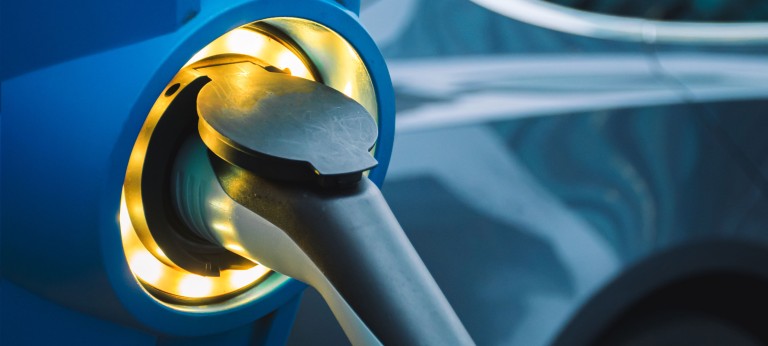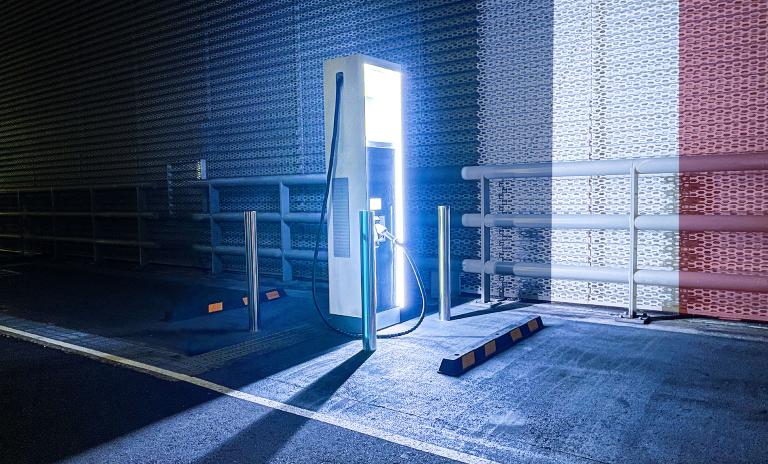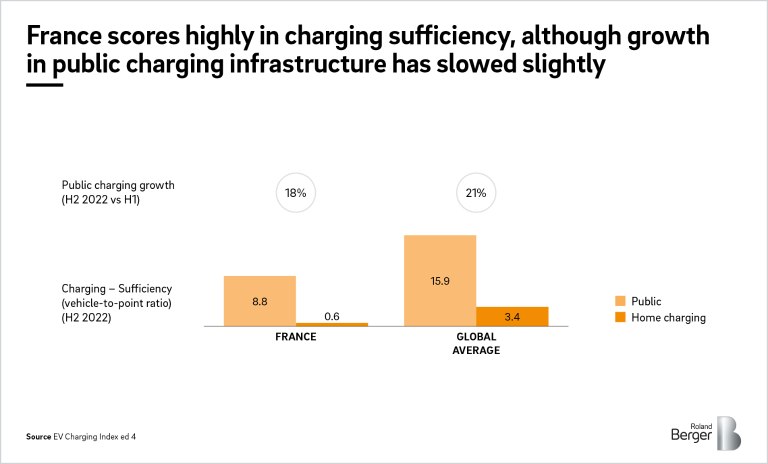EV Charging Index: Expert insight from France
![{[downloads[language].preview]}](https://www.rolandberger.com/publications/publication_image/23_2077_ART_EV_charging_index_deep_dive_France_Cover_download_preview.jpg)
France scores well in most e-mobility areas but it must increase its number of fast chargers. Learn more in the Roland Berger EV Charging Index 2023.


By Emmanuel Fages and Eric Esperance
Above-average EV sales and vehicle-to-charger ratios place France among the top European performers for e-mobility. However, growth in its public charging infrastructure has slowed slightly and it must urgently address a lack of fast DC chargers.
After a slight slowdown in early 2022 due to an increase in vehicle prices, EV sales have now reached an all-time high. At the end of 2022, the sales penetration rate was 23%, comfortably above the global average of 16%.
With nuclear power generating approximately 70% of the country’s energy, the global energy crisis hasn’t hit France as hard as some of its European neighbors. Electricity prices have risen, but so far this has had little impact on e-mobility.
Generally speaking, France scores well in our most recent Index. The ratio of 8.8 vehicles per public charge point is well ahead of the global average (15.9). And it ranks first for home charging, with a vehicle-to-point ratio of 0.6 – much better than the global average of 3.4.
However, France still has plenty of work to do when it comes to fast charging. Currently, just 10% of chargers are DC, less than half the global average of 22%. This is reflected in customer satisfaction: only 45% of drivers are satisfied with public charging speeds, versus a global average of 56% and an average of 73% for the top three countries.
Growth in public charging infrastructure has slowed in the last couple of years and is now just below the global average (18% vs. 21%). A likely contributing factor is the switch of focus from street chargers to destination charging stations, which are not yet being installed at the same pace. However, in 2023, we’ve started to see an acceleration in the installation of public charging stations, including a clear shift towards installing more DC charge points. The French government originally wanted to hit 100,000 public charge points at the end of 2022 and while it didn’t quite manage this, it has subsequently hit this mark. Along main highways, the aim is to provide an average of 10 charge points every 25 kilometers, each with 150kW of power or more. Cities are also aiming to increase charger density – Paris has already deployed at least one public charge point per street-kilometer, albeit only 1% of these is above 120 kW.
Regulations now require 10-15% of slots in public car parks to be equipped with EV charge points. And the French government has several programs to foster charging station deployment, which offer a mix of subsidies.
The expansion roadmap of many players in the on-road and destination charging segments should strongly boost the number of public charge points. Players in all segments of the market, both public and private charging, are exploring a variety of asset-heavy and asset-light business models. Higher power delivery is crucial for improving return on investment: a 22-kW charge point needs more than 15 years to show profitability.
![{[downloads[language].preview]}](https://www.rolandberger.com/publications/publication_image/23_2077_ART_EV_charging_index_deep_dive_France_Cover_download_preview.jpg)
France scores well in most e-mobility areas but it must increase its number of fast chargers. Learn more in the Roland Berger EV Charging Index 2023.

